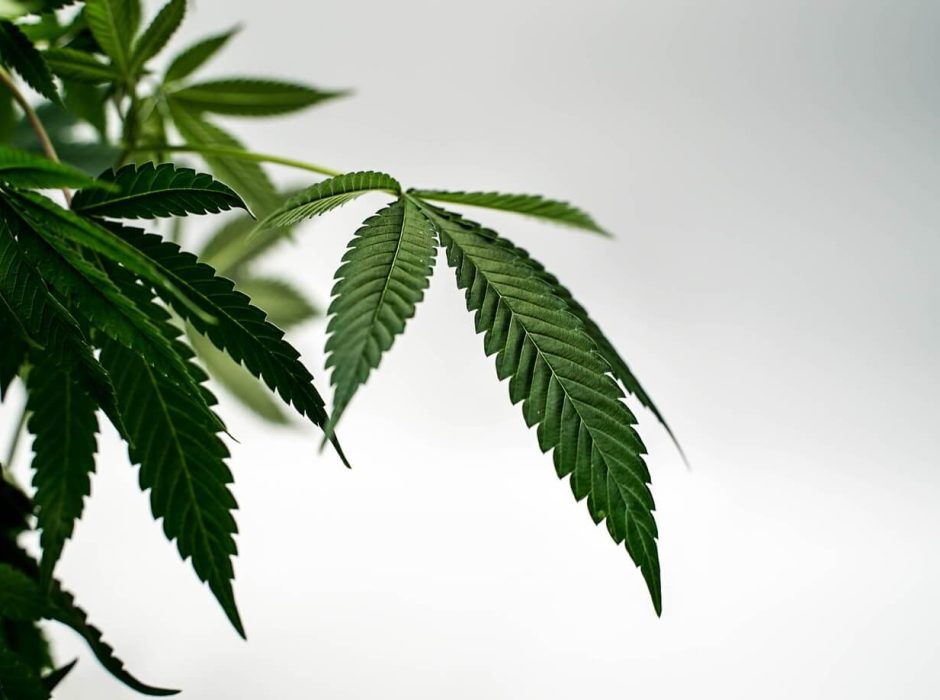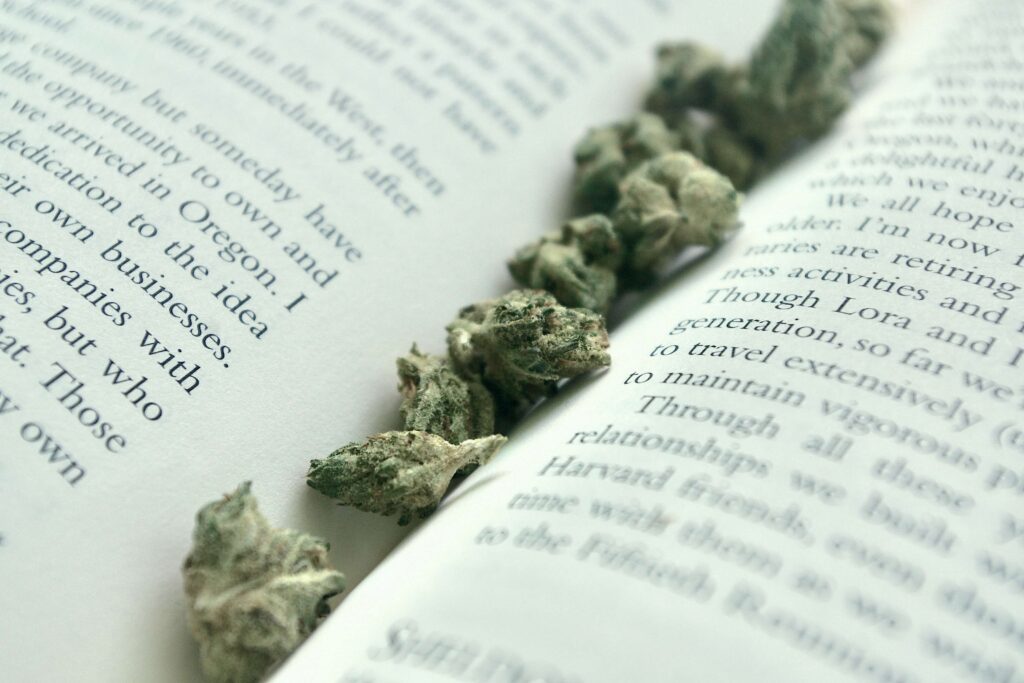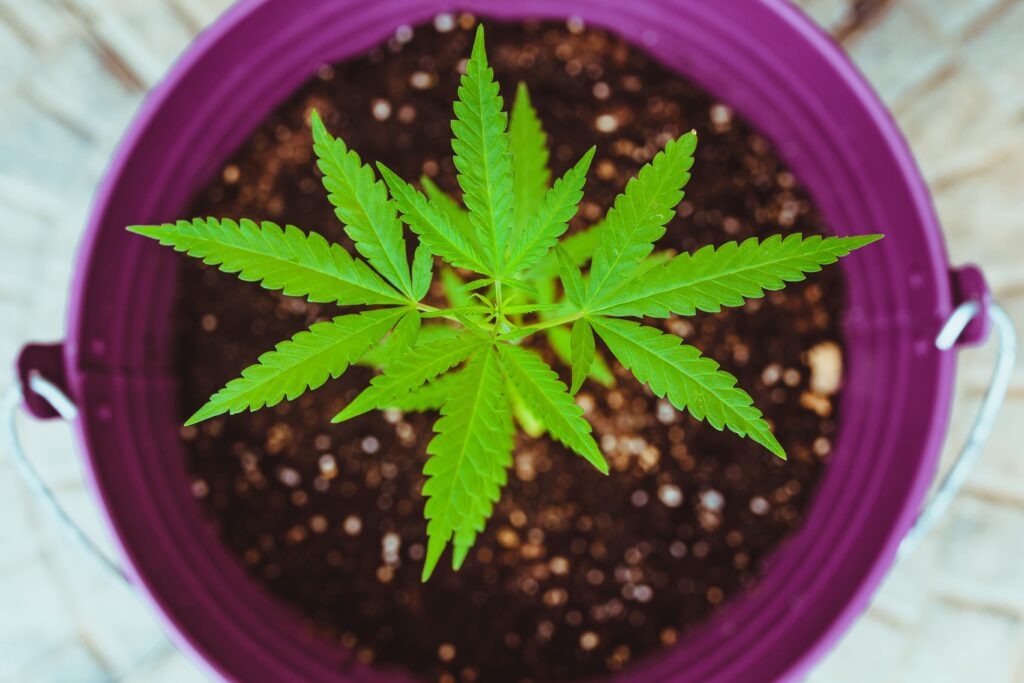Cannabis plants can grow quite large and often have more leaves than growers know what to do with. Once the buds have been harvested, dried, and cured, most people are left with a huge amount of leaves that need to be disposed of somehow.
Fan leaves are the larger, fan-like leaves that appear during the vegetative stage and typically do not contain as many trichomes as sugar leaves. But is throwing away these leaves the only option available?
Not necessarily. Traditionally, the different parts of the cannabis plant were utilized, and there’s no reason why you should only think of the leaves as garbage. In this article, you will learn different ways of using marijuana leaves to take advantage of every last bit of your cannabis garden.
But first, let’s learn a few things about cannabis leaves and how to determine that they’re in the best condition to be used for our purposes.
Is There a Difference Between Sativa and Indica Leaves?
Cannabis leaves are remarkable pieces of versatile cellular technology. They are the part of the cannabis plant that conducts light energy through chlorophyll. This natural energy provides vital fuel for the cannabis plant and helps it to thrive. Moreover, leaves can absorb nutrients that are delivered directly to them in a process known as leaf fertilisation.
Cannabis leaves from a Sativa may not be quite as dark as those from an Indica, indicating a lower chlorophyll content, which is thought to lead to a longer flowering time in Sativas. Furthermore, Sativas often have slimmer, narrower leaves with slender fingers. The thin structure allows light to penetrate the deeper layers.
You can see up to 13 fingers on some Sativa cannabis leaves, as opposed to the usual five fingers of Indicas. Meanwhile, cannabis leaves grown from hybrid cannabis seeds often have characteristics of both Indica and Sativa leaves.
What Are the Things That Can Go Wrong With Your Cannabis Plant’s Leaves?
If you know what to look for, you can identify several important factors that affect the health of your plants by looking at the appearance of cannabis leaves. If you are observant and curious, you will learn a lot about the leaves and what they can tell you about your plant, its health, and its possible needs.
A variety of factors can lead to chlorosis, the technical term for a reduction in chlorophyll, which manifests itself in yellow leaves. If you are growing cannabis and notice that your marijuana leaves are turning yellow, it is time to investigate the cause.
Nutrient deficiencies, diseases, overwatering, virus damage, underfeeding, pests, overfeeding, mold, underwatering and many other problems can be detected if you know what to look for.
Let’s take a closer look at these potential problems and how to solve them.
Incorrect pH Level
If the leaves turn yellow, there is most likely a nutrient deficiency. But if you add nutrients to the water, this deficiency is almost always a symptom of a pH problem. Whether you use hydroponics or soil, a pH imbalance will cause your plants’ leaves to become blotchy, patchy, and have burnt edges.
While a lack of a certain nutrient is the direct cause of yellow leaves, it is the pH imbalance that is the real cause. Therefore, the first thing you should do when cannabis leaves start to turn yellow is to measure the pH of your growing medium – soil for many growers, but also coco or water in hydroponics.
If the pH of the soil or hydroponic solution has strayed out of the desired range (6–7 for soil, 5.5–6.5 for hydroponics), certain nutrients can no longer be absorbed, regardless of how much nutrient is present.
A relatively inexpensive pH meter is a valuable tool that a cannabis grower can use to ensure that the pH is in the desired range.
Nutrient Deficiencies
If all other factors such as light, water, and pH are in balance, the next likely culprit is a lack of nutrition for your plants. Nutrient deficiencies can interrupt cannabis growth and prevent plants from performing vital functions. Generally, discoloration or yellowing of the lower part of a cannabis plant is caused by a macronutrient deficiency.
It is important to do something about this as soon as you have identified the problem as a nitrogen deficiency, as this can lead to plant death if left untreated. With nitrogen deficiency, you will notice that the lower leaves turn yellow during flowering (the older leaves on the underside of the plant).
Sometimes it resembles a magnesium deficiency in coloration; however, considering that the difference is in the nature of the color change, the two should not be confused.
If the leaves turn yellow between the veins, there is probably a magnesium deficiency. It is not the whole leaf that turns yellow, but the spaces between the veins, which creates a strange pattern on the otherwise green leaves. Magnesium deficiency occurs when the grower waters their plants with highly purified water.
That said, if the yellow leaves are no longer soft, but stiff or rigid, or if they do not fall off even when pulled lightly, the problem is usually due to another type of deficiency.
Potassium deficiency
Will cause dryness and yellow leaves with brown spots and curled orange-brown tips. Instead of the entire leaf discoloring, the veins remain green, and only the parts between the veins turn yellow. Cannabis plants love lots of potassium, especially in the flowering phase, but almost all cannabis-friendly nutrient systems contain plenty of potassium.
Iron deficiency
Differs from the previous problems because it affects the existing leaves at the base of the stem. For example, if your plant has grown a lot, the older leaves will naturally turn yellow and fall off. Marijuana plants don’t usually need a lot of iron to survive, so it’s probably a sign of a bigger problem that needs to be addressed.
Sulfur deficiency
Looks similar to nitrogen deficiency in the early stages, as the whole leaf is pale and chlorotic and the leaf veins are very slightly darkened.
Keep in mind that although under fertilization will cause the leaves to turn from green to yellow and eventually collapse, overfertilization must also be avoided. It will cause the leaves to become crisp, bright yellow, and curly.
In addition, flushing towards the end of the flowering phase also causes the leaves to turn yellow and fall off the branches. This is to be expected as the plant is approaching the end of its life.
Heat Stress and Light Burn
Although cannabis plants like warm temperatures, they are not immune to overheating, especially when grown indoors. You might notice a general yellowing of the leaves, especially at the tip, and they may be turned up at the edges. Even if you are not sure if overheating is the cause in your case, it is a good start, even if it is just to rule it out and move on to other possible causes.
If the leaves of your cannabis shoots or seedlings turn yellow, it is not a nutritional problem. For lack of a better explanation, this is because marijuana plants (like most plants) are susceptible to temperature extremes.
Temperatures outside the ideal range of 70–80 degrees Fahrenheit (21–27 degrees Celsius) pose the risk of discoloration and curly leaves. Therefore, it is especially important to control the temperature in your grow room and around your plants to avoid heat stress.
However, grow lights also radiate heat, and if you position them too close to the buds and leaves, they can easily burn and turn a sad brownish-yellow color. Light burn means that the leaves have been stimulated by light for too long, so they wilt early.
This is very likely if you are growing your plants in containers and have not removed them from their original container. Put your hand on the top leaves, and if they get hot or warm, it means the lighting is too close.
Light burn and heat stress can also happen when you change the bulbs in your lamps, as the new bulbs may be stronger than the old ones.
Pests and Diseases
There are many reasons for the leaves of your marijuana to turn yellow, so it is best for the health of your plants if you address the problem immediately. If due to a pest infestation, yellow leaves are a sign of ailing cannabis plants and therefore need to be treated as soon as possible.
Of course, the best way to avoid a pest problem is prevention. Never visit other growers’ gardens and never take cuttings or clones from other growers unless you are sure they are clean. If your plants are externally ventilated, make sure they are surrounded by a trellis to keep bugs out. Other grower mistakes, such as overwatering or poor aeration, can also lead to an infestation.
Fortunately, cannabis plants are resilient and can defy pests or unsuitable growing conditions on their own for a while. Once the problem is fixed, new leaves should no longer show signs of pestilence.
Turn over leaves and look for signs of moving bugs, eggs, tiny flies, or other insect activity. Some creatures, like aphids, have a voracious appetite and can go unnoticed until all the cannabis leaves are devoured and gone. You can remove aphids manually by spraying water on the leaves, then prevent them from coming back with a soap and water mixture or neem oil.
Leaf septoria
Another problem to look out for is leaf septoria. Dust build-up, dead leaves in your grow area, and dirty gardening tools are common culprits that encourage the spread of leaf septoria (also known as “yellow leaf spot”) in your cannabis garden.
Cannabis leaf septoria is an infection to which autoflowering cannabis plants are particularly susceptible, especially when grown outdoors. This fungal disease spreads first on the lower leaves and then slowly climbs up to affect several leaf layers. Also, unlike many other diseases, it attacks the back of the leaf first before spreading to the tip.
The clearest sign that a cannabis plant is infested with leaf septoria is the formation of yellow and brown spots on the top and bottom of your plants’ leaves. These spots can vary from white to grey-brown to yellow and initially show small circular lesions. As the deficiency progresses, brown, necrotic spots appear on the leaves, and the edges look dry and burnt.
With leaf septoria, the plants may also stretch too much, with large gaps between the internodes, and in the flowering phase, the buds do not increase as fast as under normal conditions.
If your plants are affected by this disease, you must always remove and completely destroy all affected leaves. You should also get rid of the fallen leaves; otherwise, the spores may overwinter on the lawn. Natural and organic disease-control fungicides work for eliminating these spores.
For instance, a fine spray of compost tea or even baking soda on the soil will help prevent yellow leaf spot disease spores from settling in your location. Some growers also recommend cinnamon to prevent the spots from spreading.
Windburn
The curling of cannabis leaves can be caused by many different problems that your marijuana plants may face. This condition is called “the claw” because the leaves of the plant curl or claw upwards.
Windburned cannabis leaves don’t always look exactly like a traditional curling leaf caused by nutrient deficiencies, overheating, or pests, but they are pretty similar. If you notice that leaves further away from the wind show no signs of curling, then your plant may be suffering from windburn. Not treating your plants’ windburn can lead to injured leaves, weak growth, and a poor harvest.
The simple solution is to move the fan a little further away from the plant indoors, or install a shelter or windbreaker outdoors. Marijuana plants can also reposition themselves to avoid the wind as they grow.
Other Cannabis Leaf Problems
Cannabis plants use their roots deep in the soil to absorb nutrients and oxygen, and if the soil is overwatered, this prevents the plants from absorbing these pockets of oxygen. As a result, the leaves will begin to wilt.
Additionally, prolonged exposure to low temperatures below 50 degrees Fahrenheit (10 degrees Celsius) will affect the leaves and kill the marijuana plants, and the flowers will also be loose and leafy, even if they make it to harvest.
What Can You do With Your Marijuana Leaves?
Now, we get to the exciting part. As mentioned earlier, you do not have to throw away your cannabis leaves after harvesting the plants. Here is a list of some of the things you can do to put them to good use:
1. Eat them raw.
While the marijuana flower buds contain the highest concentration of cannabinoids such as CBD and THC, eating the leaves has many other benefits. A 1971 United Nations report comparing cannabinoid content in male and female plants found that the large leaves of some specimens contained up to 0.3% THC and 0.7% CBD.
There are many ways to consume raw cannabis. A fun way is to sprinkle the leaves on pizza, just like basil. They add nutrition and fiber, and for someone who enjoys the flavor of cannabis, they are a welcome addition.
2. Make a cannabis smoothie or juice.
Omega fatty acids, fiber, and flavonoids are also found in cannabis leaves, making them a very nutritious ingredient in your morning green juice. You can put them in a juicer or blender with other healthy ingredients to make a highly potent canna juice.
To do this, use ice-cold water to churn and loosen the trichomes, then filter them through a series of increasingly fine sieve bags. If you don’t like the taste of the cannabis plant itself, you can add other herbs and botanicals to enhance the flavor or get the benefits of the different herbs.
3. Brew the leaves into tea.
The best way to prepare marijuana leaves for medicinal purposes is to boil or dry and grind them into powder. From that, you can make yourself a nice cup of cannabis tea.
Brewed cannabis leaves, stems, and roots have been used as early as 2700 BC to treat pain, gonorrhea, and bleeding during pregnancy.
4. Use the leaves to make edibles and extracts.
You can also make the most of your leaves by making edibles and extracts. Products like the Ice-O-Lator make this process easy and give you a good supply of kief to use. However, as fan leaves do not contain high amounts of cannabinoids, they are not suitable for making hashish.
The cannabinoids are not water soluble, but they can be extracted by adding a fat source such as butter or coconut oil. Since olive oil has a higher fat content, though, it is considered the most effective carrier oil for cannabis.
Once the leaves are dry, they can be turned into kief by simply shaking them over a fine sieve through which the dry trichomes can pass and be collected. It should not be confused with shake, which includes the loose leaves and stems that fall off naturally.
5. Smoke them.
Smoking weed leaves is a subject that many people disagree on, and so the marijuana buds remain the preferred part of the cannabis plant to smoke. Nevertheless, the smaller leaves surrounding the buds are also often smoked, although they contain no trichomes.
However, do not expect the same high as with the buds, as the leaves have a lower THC content. Note that smoking a leaf from a cannabis plant that is still in a vegetative state is unlikely to yield results.
Some ash leaves are treated with pesticide chemicals, including fertilizer, which means you should not smoke them.
6. Make organic compost.
If you are growing marijuana to harvest smokable buds, then you are probably starting your grow with feminized seeds. On the other hand, you would have discarded the male plants if you were using regular seeds. An all-female cannabis garden will produce bud, not seeds, but you will still end up with a large amount of leaves and stems.
Cannabis plants produce extremely fibrous material in their leaves and stems, and so they are great for composting. Nonetheless, mulch should only be applied to gardens with living soil to ensure that it decomposes over time to provide both food and a new habitat for beneficial insects.
Final Thoughts
So now you know of several ways to make use of your cannabis fan leaves, and you don’t have to treat them as waste material from now on! If there are other things you are doing with your leaves, or if you have tried any of our suggestions, please share your experience in the comments.


